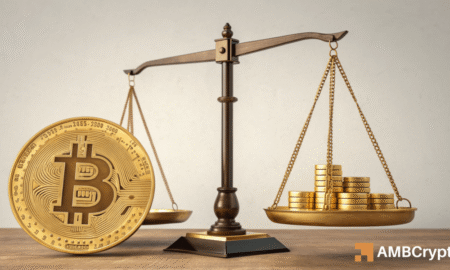Wall Street’s Growing Acceptance of Stablecoins: Key Insights
Introduction to Stablecoins and Institutional Adoption
As the cryptocurrency landscape evolves, major financial institutions are increasingly integrating stablecoins into their operations. Recently, Wall Street powerhouses like JPMorgan and Citigroup have indicated their commitment to exploring stablecoins amidst ongoing discussions around regulatory frameworks. This shift signifies a notable institutional embrace of digital currencies, which are expected to play a crucial role in transforming the financial landscape. The impressive transaction volume, reaching $36.1 trillion annually, underscores the demand and utility for stablecoins in diverse commercial applications.
Leadership Perspectives: JPMorgan and Citigroup
Recently, the CEOs of both JPMorgan and Citigroup, Jamie Dimon and Jane Fraser, respectively, have expressed positive sentiments toward stablecoins. Dimon, known historically for his skepticism towards cryptocurrencies, now acknowledges the competitive advantages stablecoins offer in payment processes. Conversely, Fraser has emphasized Citi’s plans for issuing its own stablecoin, praising the government’s efforts to facilitate smoother bank participation in digital assets. While Dimon maintains a cautious approach, the banks’ involvement indicates a transformative mindset toward the evolving financial ecosystem and the potential utility of stablecoins.
The Birth of JPMD: A New Digital Asset
Building on this trend, JPMorgan has launched plans for a deposit token, dubbed JPMD, which functions akin to a stablecoin. However, it is tailored specifically for institutional clients, reflecting a nuanced approach to adopting digital currency technology while managing inherent risks. This strategic move not only showcases the bank’s commitment to participating in the digital asset arena but also signifies a change in leadership perspectives toward integrating blockchain-based solutions into mainstream finance.
Regulatory Challenges: Legislative Dynamics
Despite the optimism surrounding stablecoins, regulatory challenges continue to loom large over the cryptocurrency market. Recent legislative efforts in Washington, particularly during "Crypto Week," faced significant hurdles, culminating in a failed vote to advance key crypto-related bills. Within the political sphere, disagreements among GOP members hindered progress, as some argued for bundled considerations of pending regulations. As President Trump encourages legislative support for digital asset regulations, the crypto community faces uncertainty regarding the future of regulatory actions, which are critical to the stablecoin framework.
Signs of Renewed Momentum
Despite the current legislative impasse, there are indications of renewed momentum in the political landscape surrounding crypto regulation. Notably, House Speaker Mike Johnson has hinted at potential upcoming votes, suggesting that progress on stalled bills may soon materialize. This evolving political landscape is essential for enticing institutional investors and enhancing the credibility of stablecoins, which may lead to a more defined regulatory environment favorable for digital assets.
The Resilience of Stablecoins and Future Prospects
In the face of regulatory uncertainty, the stablecoin market remains remarkably resilient. The data from Visa’s on-chain analytics demonstrates that these digital assets have processed an astounding $36.1 trillion in transaction volume over the past year, illustrating steadfast interest and application in real-world scenarios. As stablecoins continue to gain traction, the integration of these digital currencies by financial institutions signals a broader acceptance that could redefine payment processes and enhance operational efficiencies in the financial sector. Moving forward, stakeholders within the crypto ecosystem will closely watch the interplay between regulatory developments and institutional adoption, which will significantly influence the evolution of stablecoins.
In conclusion, while challenges persist, the embrace of stablecoins by leading financial institutions highlights a transformative era for digital currencies that may reshape the future of finance.
















